Introduction: Why SEO Still Matters in 2025
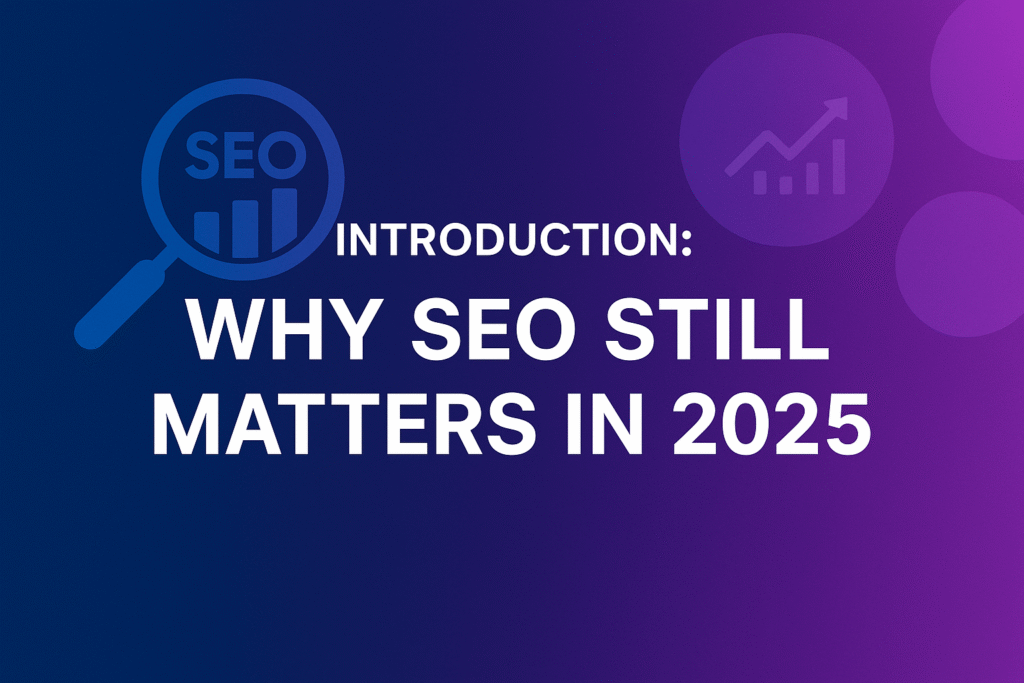
Search Engine Optimization (SEO) is not a thing of the past—it’s more important now than ever. As search engines evolve, competition for visibility grows. Whether you’re running a blog, an e-commerce store, or a service-based website, using the best SEO strategies is essential for getting noticed online.
In 2025, SEO is more than just keywords and backlinks. It’s about delivering value, creating a user-friendly experience, and staying updated with Google’s algorithm changes. With AI-generated content, voice search, and mobile browsing dominating the digital landscape, brands that ignore SEO risk falling behind.
Businesses that invest in SEO benefit from:
- Increased organic traffic without paying for ads
- Higher credibility and trust through better rankings
- Sustainable long-term results compared to paid campaigns
Keyword Research: The Foundation of SEO

At the heart of all the best SEO strategies lies keyword research. Before you create content or optimize your site, you need to know what your audience is searching for. Keyword research helps you discover the exact terms people type into Google, so you can match your content to their needs.
There are three main types of keywords:
- Short-tail keywords – Broad terms like “SEO” (high volume, high competition)
- Long-tail keywords – Specific phrases like “best SEO strategies for beginners” (lower volume, but higher intent)
- LSI keywords – Related terms and synonyms that support your main keyword
To do effective keyword research, use tools like:
- Google Keyword Planner – Great for basic data and volume trends
- Ahrefs or SEMrush – Powerful tools for competition and keyword difficulty
- Ubersuggest – Beginner-friendly with useful insights
The goal is to find keywords that have:
- High search volume
- Low to medium competition
- Relevance to your niche
By building your content around well-researched keywords, you increase your chances of ranking on the first page of search results. Without keyword research, even the best-written content might never be seen.
On-Page SEO: Optimize What Google Reads
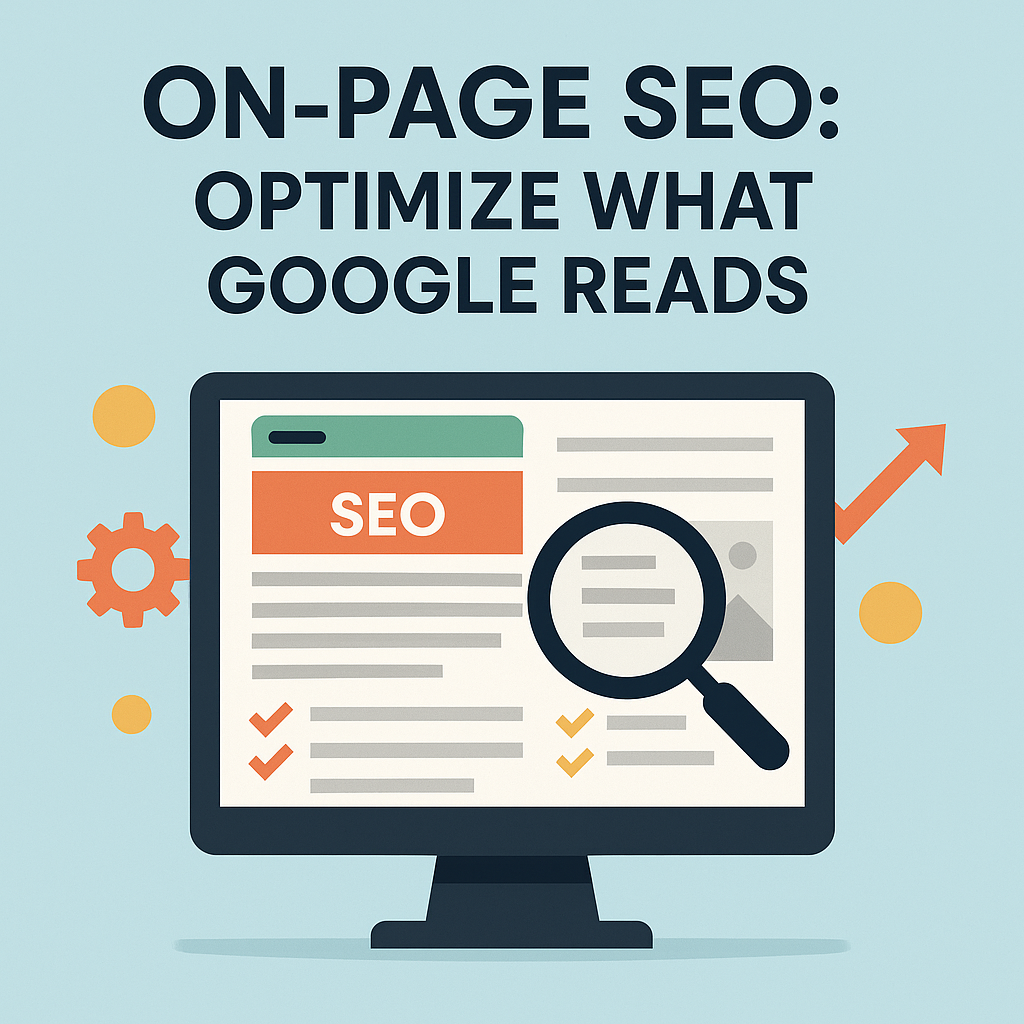
On-page SEO is one of the best SEO strategies because it helps search engines understand your content. It involves optimizing elements directly on your web pages—what Google “reads” to decide how to rank your site.
Here are the key areas to focus on:
1. Title Tags
Your title tag is the clickable headline in search results. Make sure it includes your main keyword and stays under 60 characters.
Example:
Best SEO Strategies for 2025: Rank Higher Fast
2. Meta Descriptions
These appear below your title tag in search results. They should be 150–160 characters long, compelling, and include your target keyword.
3. Headers (H1, H2, H3…)
Organize your content with header tags. Use one H1 for the main title, and H2s/H3s for subtopics. This helps both Google and readers navigate your content.
4. Keyword Placement
Include your target keyword:
- In the first 100 words
- In at least one subheading
- Naturally throughout the content (avoid keyword stuffing)
5. URL Structure
Keep URLs short, readable, and keyword-rich.
Example: yoursite.com/best-seo-strategies
6. Internal Linking
Link to other relevant pages on your site to boost SEO and help readers discover more content.
7. Image Optimization
Use descriptive filenames and ALT text for images. Google can’t “see” images, so this helps with indexing.
By following these on-page techniques, you make it easier for Google to rank your content—and easier for users to stay engaged.
High-Quality Content: Google’s Favorite Ranking Factor
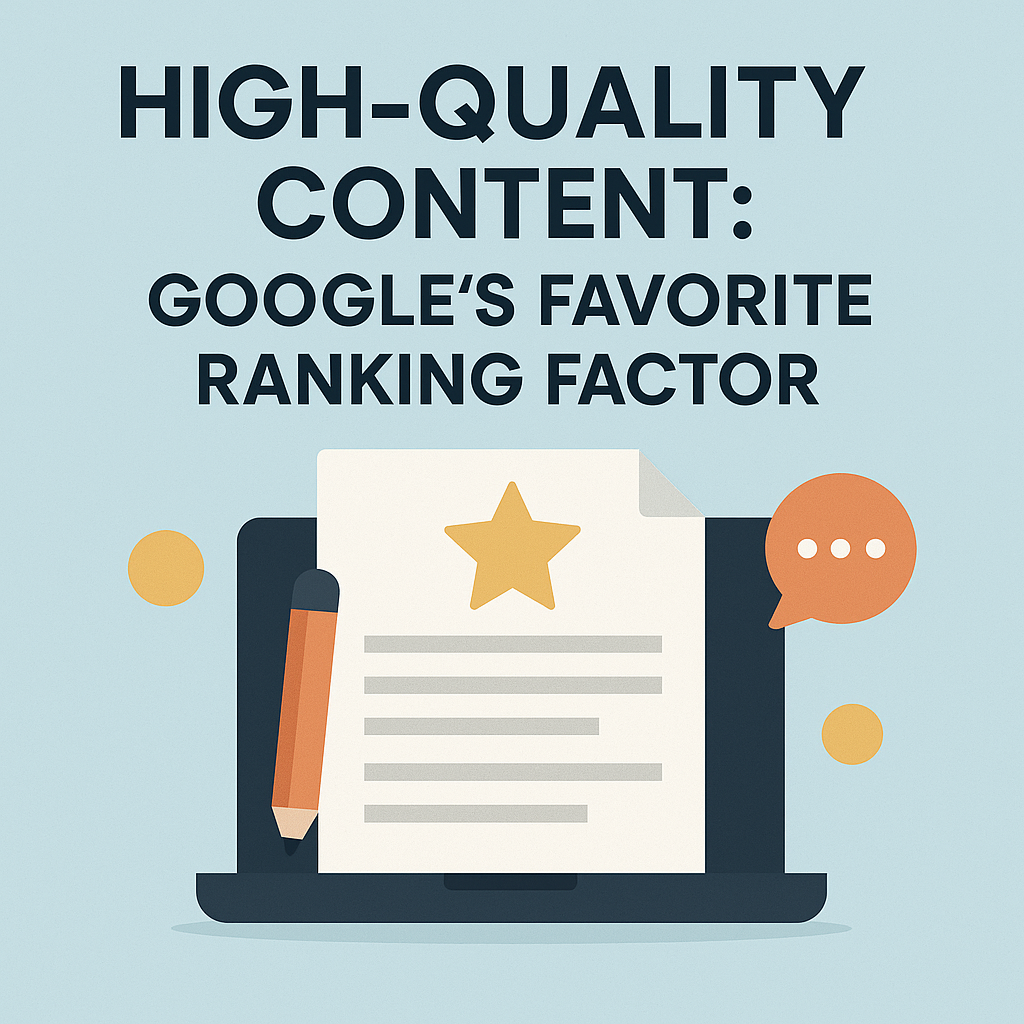
No matter how many tactics you use, nothing beats high-quality content when it comes to SEO. In fact, creating valuable, original, and helpful content is one of the best SEO strategies you can implement.
Google’s algorithm rewards content that:
- Answers the user’s search intent clearly
- Provides in-depth, trustworthy information
- Is well-structured, easy to read, and engaging
What Makes Content “High-Quality”?
- Useful and Original Information
Don’t copy what’s already ranking—add something new. Share your expertise, personal insights, or updated stats. - Clear Structure and Formatting
Break content into sections with headings, bullet points, and short paragraphs to improve readability. - E-E-A-T Principles
Google favors content that shows Experience, Expertise, Authoritativeness, and Trustworthiness. Back up claims with data, link to reliable sources, and include author bios when possible. - Multimedia and Visuals
Images, infographics, and videos make content more engaging and improve user experience—another factor Google considers. - Content Depth and Word Count
Longer content (1,500–2,500 words) tends to rank higher—if it provides value throughout. Don’t write long just to be long; focus on relevance. - Regular Updates
Fresh content performs better. Update old posts with new facts, images, and keywords to stay competitive.
High-quality content builds trust with your audience and increases the chances of backlinks, shares, and time spent on your site—all of which improve your rankings.
Technical SEO: Don’t Ignore Your Site’s Structure
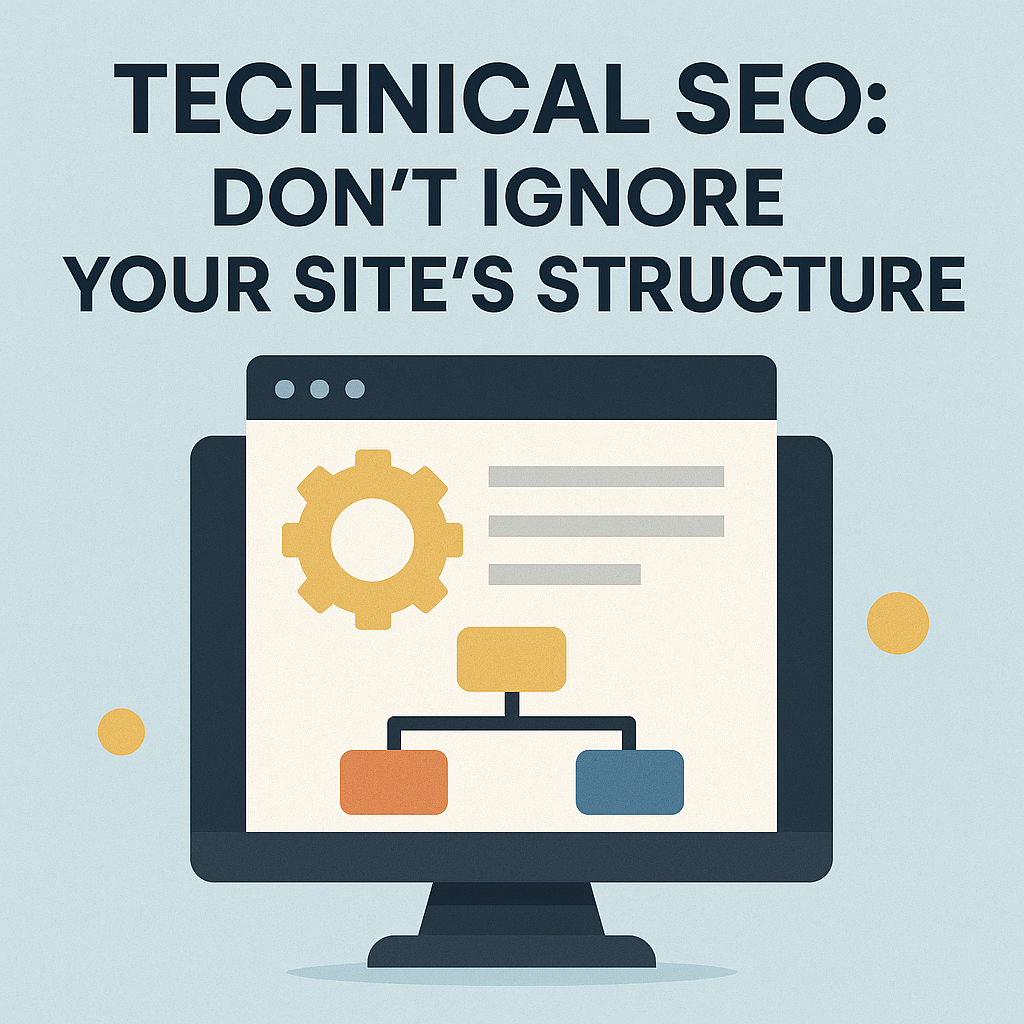
When people think about the best SEO strategies, they often focus on content and keywords—but technical SEO is just as important. It ensures that search engines can crawl, index, and understand your site correctly.
If your website has technical issues, even the best content might never reach your audience.
Key Elements of Technical SEO
- Site Speed
Fast-loading websites rank better and provide a better user experience. Use tools like Google PageSpeed Insights to check and improve speed. - Mobile-Friendliness
Since Google uses mobile-first indexing, your site must be responsive. If it doesn’t work well on mobile devices, your rankings will suffer. - Secure Website (HTTPS)
A secure site builds trust. Make sure your domain uses HTTPS, not just HTTP. - Clean and Crawlable Site Architecture
Use a logical URL structure, simple navigation, and internal links to help search engines understand your site. Avoid broken links and deep pages that are hard to reach. - XML Sitemap and Robots.txt
An XML sitemap helps Google discover your pages. A robots.txt file tells search engines what to crawl or ignore. - Structured Data (Schema Markup)
This helps search engines understand your content better and can enable rich snippets (like ratings, FAQs, and more). - Fixing Errors
Regularly check for 404 errors, redirect chains, and duplicate content using tools like Google Search Console or Screaming Frog.
By taking care of technical SEO, you’re building a strong foundation that supports all the other best SEO strategies—ensuring your site is ready to rank and perform
User Experience (UX) and SEO: A Perfect Pair

When it comes to the best SEO strategies, user experience (UX) is often overlooked—but it shouldn’t be. Google’s goal is to give users the most helpful and enjoyable experience. That means your website must be easy to use, fast, and clear.
If people visit your site and leave quickly, it tells Google your content isn’t useful. That’s why good UX directly affects your SEO rankings.
How UX Impacts SEO
- Page Speed
Slow websites frustrate users. If your page takes more than 3 seconds to load, many visitors will leave—hurting your rankings. - Mobile Usability
A responsive site that looks great and works well on phones is essential. Google prioritizes mobile-first indexing, so a poor mobile experience equals poor SEO. - Clear Navigation
Visitors should find what they’re looking for in 1–2 clicks. Use simple menus, a clear layout, and intuitive buttons to guide them. - Readable Content
Use short paragraphs, bullet points, large fonts, and proper spacing. Make it easy for users to scan your content. - Visual Design
Clean, professional design helps build trust. A cluttered or outdated site may turn visitors away—even if the content is good. - Low Bounce Rate & High Dwell Time
Good UX keeps people on your site longer. The more time they spend, the more Google sees your content as valuable.
Combining SEO with great user experience isn’t just smart—it’s essential. The best SEO strategies go beyond keywords and rankings; they create websites people enjoy using.
Mobile SEO: Think Smartphone-First
One of the best SEO strategies you can use today is making sure your website is fully optimized for mobile devices. With more than half of global web traffic coming from smartphones, Google now uses mobile-first indexing—meaning it looks at your mobile site first when deciding how to rank your pages.
If your site doesn’t work well on mobile, your rankings—and your visitors—will suffer.
Why Mobile SEO Matters
- Google’s Mobile-First Indexing
Google crawls and ranks your mobile version before the desktop one. A poor mobile layout = poor SEO performance. - User Behavior
Most users browse, search, and shop on their phones. If your site isn’t mobile-friendly, they’ll leave quickly, increasing your bounce rate. - Speed on Mobile
Mobile users expect speed. Slow-loading pages lead to frustration and lost traffic. Compress images and use caching to improve load times. - Responsive Design
Your website should adapt to different screen sizes automatically. This makes it easier for users to read and navigate on any device. - Tap-Friendly Buttons and Menus
Avoid tiny buttons and crowded links. Make sure everything is easy to tap with a finger. - Readable Content on Small Screens
Use larger fonts, enough spacing, and avoid long paragraphs. Make it easy for mobile users to consume your content.
Optimizing for mobile is no longer optional—it’s required. The best SEO strategies in 2025 prioritize the mobile experience just as much as content and keywords.
Link Building Strategies That Actually Work
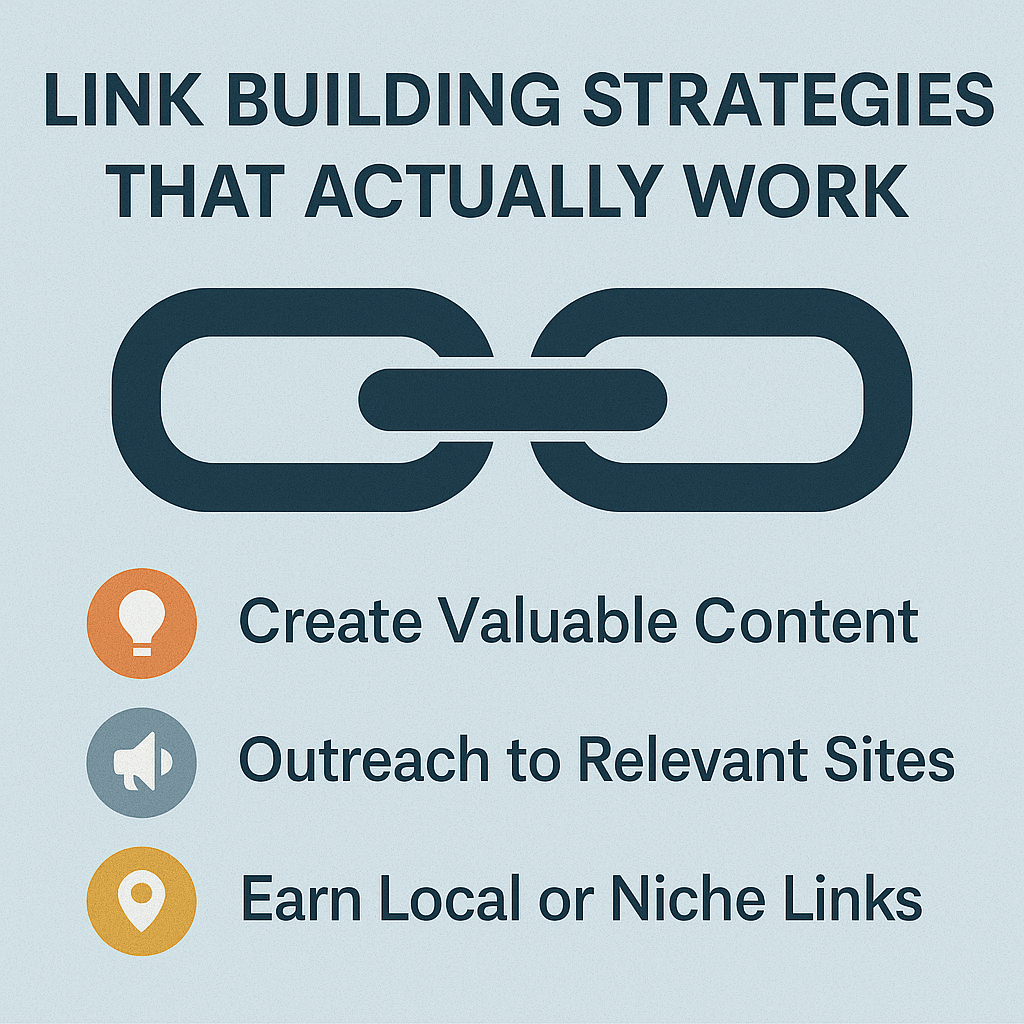
Backlinks—links from other websites to yours—are still one of the most powerful ranking signals in Google’s algorithm. That’s why effective link building is a must in any list of the best SEO strategies.
But not all backlinks are equal. Low-quality or spammy links can hurt your SEO. Focus on earning high-quality, relevant backlinks that add real value.
Proven Link Building Strategies
- Create High-Value Content
The best way to earn backlinks is to publish content people want to share. This includes:
- In-depth guides
- Original research or data
- Infographics and case studies
- Guest Posting on Relevant Sites
Write valuable articles for trusted blogs in your niche. In return, include a link back to your site in the author bio or content (as long as it’s relevant). - Broken Link Building
Find broken links on other websites and suggest your content as a replacement. Use tools like Ahrefs or Check My Links to identify these opportunities. - Build Relationships, Not Just Links
Engage with bloggers, journalists, and industry influencers. Networking can lead to natural backlinks over time. - Use HARO (Help a Reporter Out)
Sign up for HARO and respond to journalist requests with expert quotes. If selected, you’ll earn high-authority backlinks from news sites. - Create Link-Worthy Tools or Templates
Offer free tools, calculators, or downloadable templates. These resources tend to get shared and linked to naturally. - Update and Promote Old Content
Refresh older blog posts with new information and then reach out to sites that previously linked to similar content.
By focusing on genuine, helpful link building, you not only increase your authority but also strengthen your chances of ranking for your target keywords. High-quality backlinks are a key part of the best SEO strategies.
Local SEO: Dominate Local Search Results
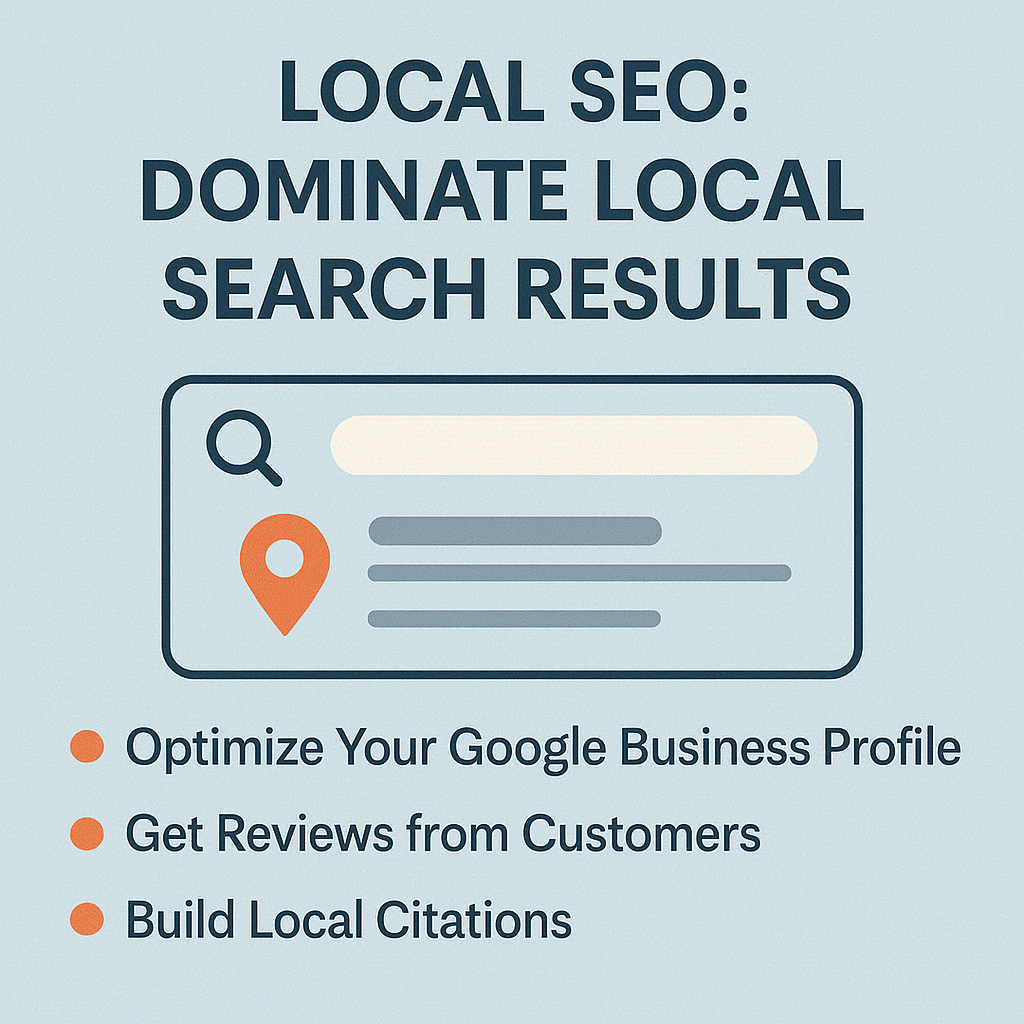
If you run a business that serves a specific area—like a restaurant, clinic, or local service—then local SEO should be at the top of your list of the best SEO strategies. Local SEO helps your business show up when people search for nearby services, especially on Google Maps and mobile.
When someone types “best coffee shop near me,” Google looks for local businesses with strong local SEO signals. If you’ve optimized correctly, your business could appear in the top 3 map listings (known as the “Local Pack”).
Key Local SEO Strategies
- Google Business Profile (GBP) Optimization
Claim and complete your Google Business Profile (formerly Google My Business). Add your:
- Business name, address, and phone number (NAP)
- Business hours and services
- Photos, reviews, and updates
- Consistent NAP Across the Web
Make sure your business name, address, and phone number are the same everywhere—your website, directories, and social media. - Get More Local Reviews
Encourage happy customers to leave reviews on Google. Positive reviews boost trust and visibility. - Local Keywords and Location Pages
Use keywords that include your city or neighborhood (e.g., “best SEO strategies in Chicago”). Create separate landing pages for each location you serve. - Local Business Directories and Citations
List your business on directories like Yelp, YellowPages, Bing Places, and niche-specific sites. - Mobile-Friendly and Fast Website
Most local searches happen on mobile. Make sure your site loads fast and works well on smartphones.
By implementing these tactics, you’ll not only attract more local customers but also stand out from competitors. For local businesses, local SEO is one of the best SEO strategies you can invest in.
Voice Search Optimization: The Future is Talking
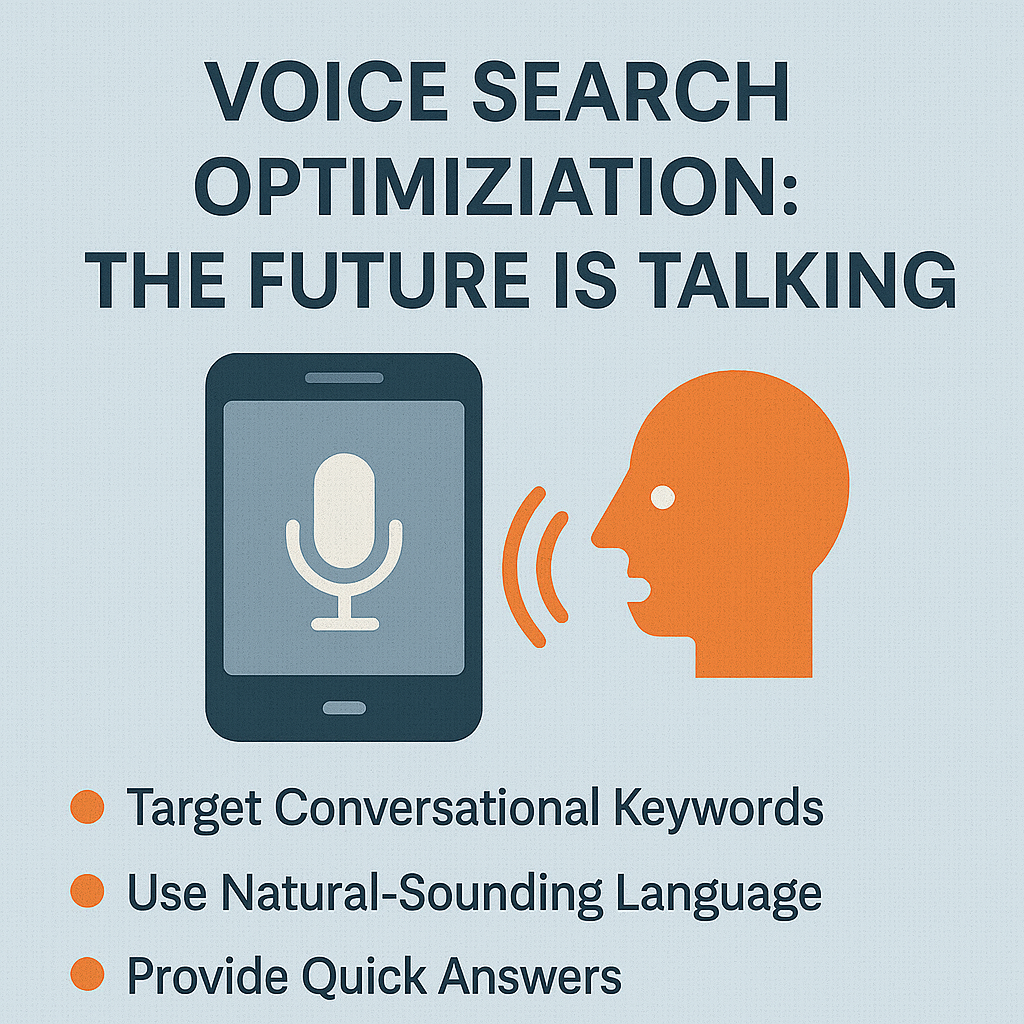
With the rise of smart speakers, voice assistants, and mobile voice search, optimizing for spoken queries is now one of the best SEO strategies to stay ahead. More people are using voice to search on devices like Siri, Alexa, and Google Assistant—and their search behavior is different from typing.
Voice search is faster, more conversational, and often focused on local or quick-answer queries. If your content isn’t optimized for voice, you might be missing out on valuable traffic.
How to Optimize for Voice Search
- Use Natural, Conversational Language
Voice searches are often full questions, like “What are the best SEO strategies for small businesses?” Write your content in a way that answers these types of queries clearly. - Target Long-Tail and Question-Based Keywords
Include phrases like:
- How to…
- What is…
- Best way to…
These are commonly used in voice searches.
- Create FAQ Sections
A well-structured FAQ page directly answers common questions. This format is perfect for voice search results and can increase your chances of appearing in featured snippets. - Optimize for Featured Snippets
Voice assistants often read featured snippets aloud. Structure your answers in short, clear paragraphs or bullet points that directly answer questions. - Improve Page Speed and Mobile Usability
Voice search usually happens on mobile. A fast, responsive website increases your chances of being selected as the answer. - Use Structured Data (Schema Markup)
Adding schema helps search engines understand your content better and improves your chances of appearing in voice search results.
As more users turn to voice commands, optimizing for voice search isn’t just optional—it’s part of the best SEO strategies for long-term visibility.
Content Refreshing: Boosting Rankings with Old Posts

One of the best SEO strategies that many people overlook is content refreshing. Updating your old blog posts can boost your rankings, increase traffic, and keep your content relevant—all without creating brand-new articles from scratch.
Google loves fresh content. If your blog post is outdated, with old stats or broken links, it’s less likely to rank—even if it was performing well in the past.
Why Refresh Old Content?
- Improves SEO performance for posts that are dropping in rank
- Saves time and resources compared to writing a new post
- Increases relevance by updating facts, keywords, and examples
- Signals to Google that your site is active and maintained
How to Refresh Your Content
- Update Stats, Dates, and Facts
Replace old data with the latest statistics. Make sure your information is current and credible. - Re-optimize for New Keywords
Use tools like Google Search Console to find new keywords your post is already ranking for. Add them naturally into your content. - Improve Readability and Structure
Break up long paragraphs, add headers, bullet points, or visuals to make the content easier to scan. - Fix Broken Links and Add New Internal Links
Ensure all outbound links work and link to other relevant pages on your site to boost internal SEO. - Add Fresh Images or Media
Use updated screenshots, infographics, or videos to make the post more engaging and up-to-date. - Resubmit to Google for Indexing
Once updated, request re-indexing via Google Search Console to speed up visibility changes.
Regularly refreshing your content is a smart, efficient way to improve your site’s SEO health. It’s one of the best SEO strategies for maximizing the value of what you’ve already created.
Internal Linking: Build Your SEO Web
Internal linking is one of the best SEO strategies for improving your site’s structure and boosting your rankings. It involves linking one page of your website to another. These links help search engines understand your site layout—and guide users to more of your valuable content.
When done correctly, internal linking improves user experience, increases time on site, and spreads link equity (ranking power) across your pages.
Why Internal Linking Matters
- Helps Google Crawl Your Site
Search engines use links to discover and index content. Internal links ensure that important pages aren’t missed. - Improves Page Authority
Linking from high-traffic or high-authority pages passes some of that SEO value to the pages you link to. - Keeps Visitors on Your Site Longer
By linking to related content, you reduce bounce rates and guide users deeper into your site. - Improves Navigation and User Flow
Well-placed links help users find related topics easily, improving the overall experience.
Best Practices for Internal Linking
- Use Descriptive Anchor Text
Instead of writing “click here,” use natural keyword phrases like “learn more about the best SEO strategies.” - Link to Relevant Content Only
Only link to content that adds value to the topic being discussed. Forced or unrelated links can hurt UX and SEO. - Don’t Overdo It
Too many links on one page can confuse both users and search engines. Aim for a balanced structure. - Update Old Posts with New Links
Whenever you publish a new post, go back to old content and link to the new one when relevant.
Internal linking strengthens your SEO from the inside out. It’s a simple, low-cost tactic that supports all the best SEO strategies by building a clear, connected structure for both search engines and users.
SEO Analytics: Measuring What Matters

One of the best SEO strategies isn’t just about what you do—it’s about what you track. SEO analytics helps you understand what’s working, what’s not, and where you should focus your efforts next. Without data, you’re guessing. With analytics, you’re optimizing.
By measuring the right metrics, you can improve your rankings, refine your content, and make smarter decisions that grow your traffic over time.
Key SEO Metrics to Track
- Organic Traffic
The number of visitors coming to your site from search engines. You can track this using Google Analytics or similar tools. - Keyword Rankings
Monitor how your pages rank for specific keywords. Tools like Ahrefs, SEMrush, or Ubersuggest can show your position changes over time. - Click-Through Rate (CTR)
This is how often users click on your site when it appears in search results. A low CTR means your title or meta description may need improvement. - Bounce Rate
The percentage of visitors who leave after viewing just one page. A high bounce rate could mean your content doesn’t match user intent. - Average Session Duration
This tells you how long people stay on your site. Longer time usually means your content is engaging and relevant. - Pages Per Session
Shows how many pages a visitor views in one session. More pages = better internal linking and user interest. - Backlink Profile
Track the number and quality of backlinks pointing to your site. High-authority backlinks improve your domain authority and rankings. - Core Web Vitals
Google now includes page speed, interactivity, and visual stability in its ranking algorithm. You can monitor these using Google Search Console or PageSpeed Insights.
Recommended Tools
- Google Analytics – Tracks traffic, behavior, and conversions
- Google Search Console – Monitors search performance and technical issues
- Ahrefs / SEMrush / Ubersuggest – Keyword tracking, backlinks, and competitor research
Using analytics is essential for applying the best SEO strategies effectively. It tells you where to improve and what to keep doing. Think of it as your SEO GPS—it helps you stay on the right path.
AI and SEO: How to Use AI Without Risking Penalties
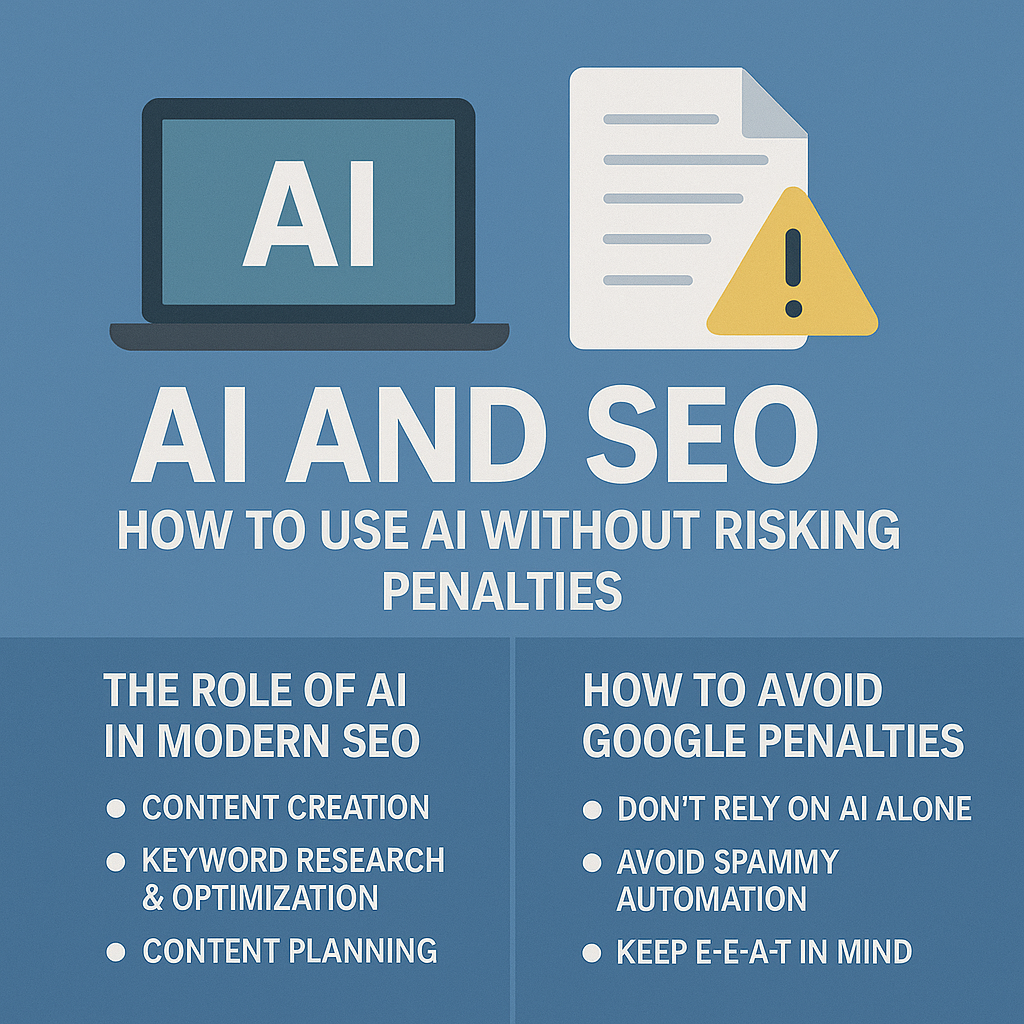
AI tools are changing how we do SEO—from writing content to analyzing data. When used correctly, AI can save time and boost results. But when misused, it can hurt your rankings or even trigger penalties from Google. Knowing how to use AI smartly is now part of the best SEO strategies in 2025.
The Role of AI in Modern SEO
- Content Creation
AI writing tools like ChatGPT and Jasper can help create outlines, generate article drafts, or rewrite meta descriptions. But:
- Always edit and fact-check AI content
- Avoid publishing AI-written text without human review
- Ensure originality and value for users
- Keyword Research & Optimization
AI can analyze thousands of search terms quickly and suggest the best keywords to target. It’s a great way to find long-tail keywords and user questions you may miss manually. - Content Planning
Use AI to generate topic clusters, build content calendars, and identify gaps in your site. This helps you stay ahead of competitors with data-driven strategy. - SEO Automation
AI tools can audit websites, detect SEO errors, and suggest fixes for technical issues. This includes:
- Broken links
- Missing tags
- Slow-loading pages
How to Avoid Google Penalties with AI
- Don’t Rely on AI Alone: Google’s Helpful Content System favors original, people-first content. AI should assist—not replace—human input.
- Avoid Spammy Automation: Spinning content or flooding your site with AI-generated pages can lead to deindexing.
- Keep E-E-A-T in Mind: Content should reflect real expertise, experience, authority, and trust—something AI can’t fully offer.
Using AI tools the right way can improve efficiency, but human creativity, quality control, and strategy still matter. Balancing both is one of the best SEO strategies for long-term success.
Conclusion: Creating an Evergreen SEO Strategy
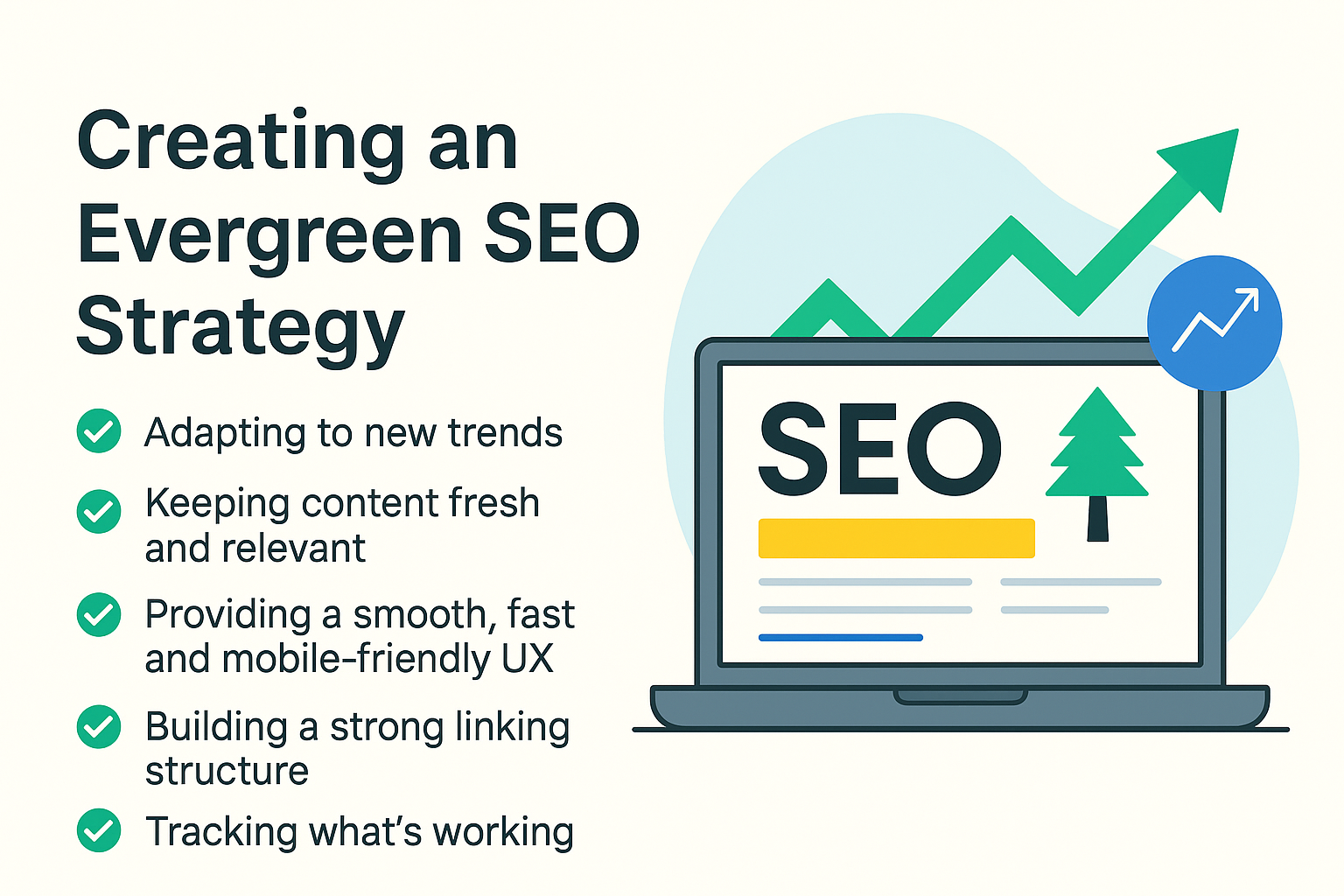
SEO is always evolving—but the core principles stay the same. To succeed long-term, you need to focus on the best SEO strategies that stand the test of time. These include creating valuable content, optimizing your site for both users and search engines, and constantly reviewing your performance.
An evergreen SEO strategy means:
- Adapting to new trends like voice search and AI
- Keeping content fresh and relevant
- Providing a smooth, fast, and mobile-friendly user experience
- Building a strong internal and external linking structure
- Tracking what’s working through SEO analytics
SEO isn’t a one-time task—it’s an ongoing process. The websites that rank highest are the ones that stay consistent, keep learning, and continue improving. Whether you’re just starting or looking to refine your approach, following these best practices will give you an edge over your competitors.
Invest in what works. Test new ideas. And always put your audience first—because that’s what Google is doing too.
Start using the best SEO strategies today, and you’ll build a strong, sustainable presence that grows with time.

